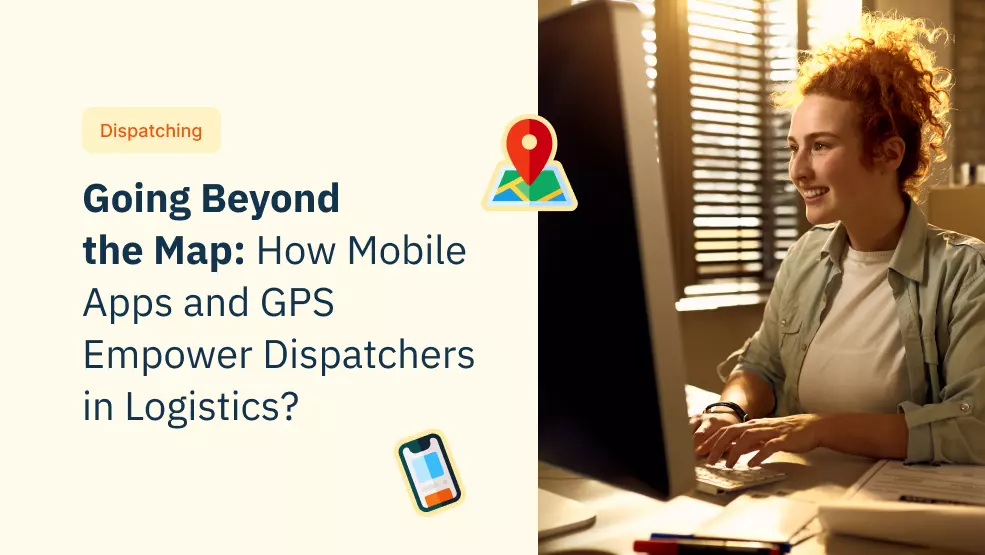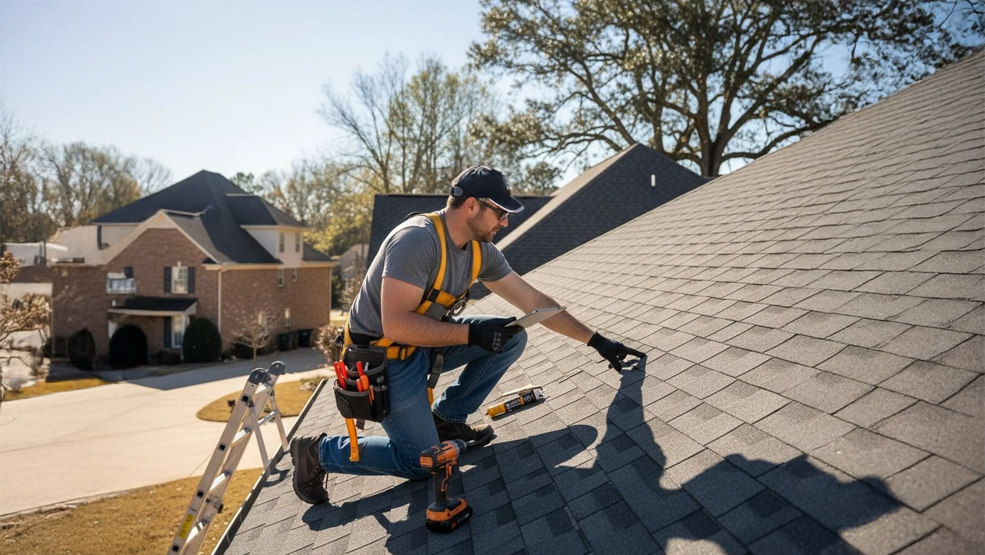The global fleet management market is projected to reach $55.6 billion by 2028, which is a 14.2% steady CAGR growth, and the North American market is projected to grow from $10.36. Billion in 2023 to 18.32 billion, with a 12.1% CAGR growth by 2028. It is no secret that mobile apps and GPS technology have significantly advanced logistics operations, enhancing efficiency, accuracy, and real-time data capture. Did you know that the American Transportation Research Institute revealed that using geolocation applications or GPS technology for route optimization resulted in a 15% reduction in miles traveled in a day, leading to significant fuel savings and improved efficiency?

It has become clear that mobile apps and GPS tools have become pivotal in streamlining processes such as tracking assets, managing drivers, scheduling and dispatching, increasing operational efficiency, and optimizing the supply chain. The dispatchers play a vital role in logistics and are an integral part of your business’ success. Their everyday tasks include matching drivers with orders and considering factors like location, skills, and the type of vehicle needed for the trip. Their tasks also included monitoring real-time location, estimated arrival time (ETAs), and potential issues through traditional phone calls and limited tracking systems. Relaying information between drivers, customers, and other departments often relies on fragmented communication channels. Manually planning and troubleshooting problems like traffic jams, breakdowns, or changes in delivery schedules relies on reactive solutions.
This is where mobile apps save the day, providing real-time fleet visibility, seamless communication, and automated workflows. The introduction of mobile apps and GPS technology has taken logistics to the next level by transforming tracking from periodic updates to real-time, providing insights into traffic patterns, and empowering proactive resolution of issues. It helped bridge the communication gaps with instant messaging, voice calls, and digital documents, ensuring everyone was on the same page. GPS technology also helped optimize routes based on real-time data, reducing travel distance, fuel consumption, and emissions. It empowered drivers by providing navigation assistance and traffic updates, leading to safer, more efficient routes. Most importantly, it allows dispatchers to replace manual tasks like dispatching, route planning, and reporting with automated solutions, giving them more time to make strategic decisions.
The market for this technology has tremendous potential, with North America alone projected to reach $18.32 billion by 2028; the impact of these tools is undeniable. Studies reveal a 15% reduction in miles traveled with route optimization, showcasing the dramatic boost in the efficiency they offer. In the following sections, we’ll look at the benefits these tools bring to dispatchers. We’ll explore how they transform tracking from intermittent glimpses to real-time insights and bridge communication gaps with seamless data flow while automating mundane tasks and freeing up time for strategic thinking. Let’s look at how mobile apps and GPS empower dispatchers to become masters of efficient logistics.
The Benefits of Mobile Apps and GPS for Dispatchers
Mobile apps and GPS have ushered in a new era of real-time transparency, giving dispatchers a clear picture of where their drivers and vehicles are at any given time. Imagine having a huge screen displaying all your vehicles on a live feed, with each vehicle displaying its location, status, and ETA; this is what you could achieve with mobile apps and GPS. Leverage GPS technology to narrow down the precise location of your vehicles, transmitting data seamlessly through your mobile devices.
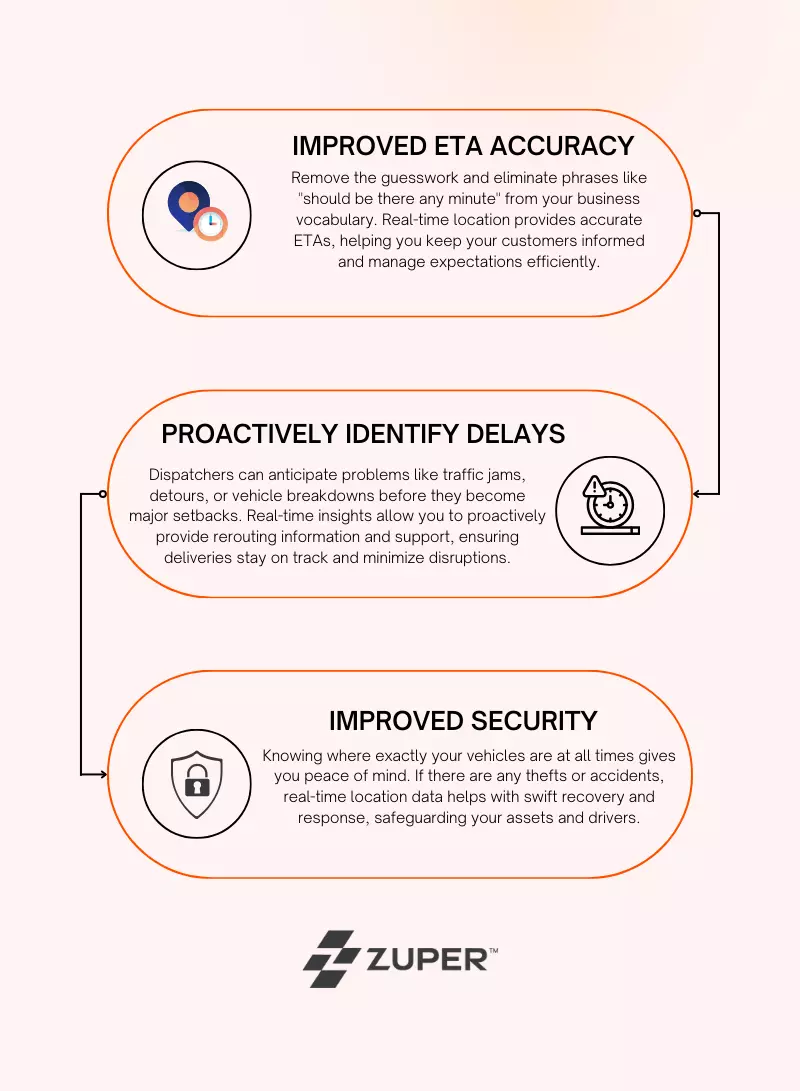
The possibilities extend beyond these advantages since mobile apps provide real-time traffic data, allowing dispatchers to optimize routes on the go, saving time, fuel, and money. It doesn’t end there; geofencing enables you to create virtual boundaries, alerting dispatchers if a vehicle strays from its designated path, further enhancing your fleet’s security. This shift from fuzzy estimates to real-time visibility offered by mobile apps and GPS isn’t just an upgrade; it’s a transformation. It empowers dispatchers to become true logistic aficionados, providing smooth deliveries and maximizing efficiency with unprecedented control.
By trying to improve the efficiency of your fleet, you are not only improving your business, but you are also working towards a good cause of helping the planet; how? With the rise of sustainable logistics practices, route optimization is a crucial strategy to reduce emissions, it mitigates climate change by optimizing transportation networks.
Real-time tracking helps dispatchers view their entire fleet in real-time, like dots on a live map. Having a visual of the actual location and status of technicians, they can:
- Optimize routes by dynamically making adjustments based on traffic, reducing travel time and fuel costs.
- Manage delays by proactively rerouting technicians around accidents or breakdowns, minimizing customer impact.
- Improve customer satisfaction by providing accurate ETAs and updates, enhancing transparency and trust.
Focusing on the key elements in your business leads to smoother operations and happier customers and gives you a significant competitive edge.
Optimized communication and collaboration
Imagine drivers navigating through traffic jams without clear instructions or the driver being stuck in traffic with a flat tire. Dispatchers struggled to reach customers with updates and vital documents. This was the harsh reality before mobile apps stepped in and revolutionized communication for dispatchers, drivers, and their customers. Relying on back-to-back phone calls and limited email chains is long gone. Mobile apps help dispatchers instantly locate the nearest technician, coordinate a service call, and update the customer if there are any delays. This reduces downtime for the driver, builds trust, and fosters a sense of support. Mobile apps provide a central hub bridging the gap for two-way communication.
With instant messaging, dispatchers can now instantly provide drivers with clear instructions, route updates, or any troubleshooting guidance they might require. Drivers can request support, report issues, and ask questions, all within the mobile app, ensuring timely responses and efficient problem-solving. If the situation requires a more detailed discussion, dispatchers can always make a voice call to the technician’s mobile device; this streamlines communication for urgent issues, accident reports, or complex task clarification.

Dispatchers can also instantly share documents with their drivers using a mobile app since it acts as a digital repository for essential documents like delivery notes, invoices, and customer information. Dispatchers can eliminate bulky paperwork and ensure everyone can access the latest information. It does not stop with just documents; if drivers witness an accident or encounter a safety hazard, they can instantly use the app to capture photos or videos. This allows dispatchers to take immediate action and ensures proper documentation, facilitating everyone’s safety while allowing for faster resolutions.
The impact of improved communication goes beyond individual instances, and some complex tasks often involve multiple crews or subcontractors. Mobile apps allow dispatchers to assign tasks individually or collaboratively, monitor progress in real-time, and share updates. Ensuring everyone is on the same page leads to tasks being completed more efficiently and provides improved operations. With mobile apps, dispatchers can foster a culture of collaboration and share information with the entire logistics team. Drivers feel empowered with instant support, customers receive timely updates, and stakeholders gain valuable business insights. This translates to increased efficiency, reduced costs, and, ultimately, a happier and more satisfied environment for everyone involved.
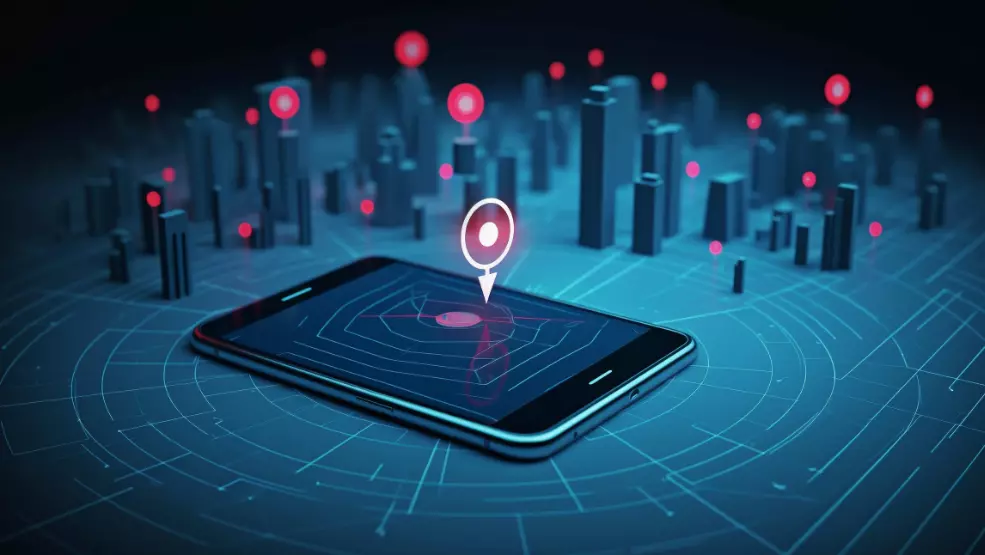
Mobile apps and GPS technology take you beyond automation
The world of logistics thrives on precision and efficiency, but this takes a toll on the dispatchers, who are sometimes overwhelmed with repetitive tasks. Manual dispatching, route planning, and report generation take up valuable time, leaving little room for strategic thinking and proactive problem-solving. Thankfully, mobile apps have become powerful allies by automating these mundane tasks and liberating dispatchers, helping them smoothly manage their logistic responsibilities. In 2022, navigation apps had a revenue of $16.2 billion. The sector is forecasted to grow at a rate of 14.8% and generate $36.6 billion in revenue by 2028.
Mobile apps eliminate the need for handwritten logs and endless phone calls. Instead, intuitive interfaces guide dispatchers through their everyday processes. Mobile apps not only automate tasks but also ensure data accuracy.
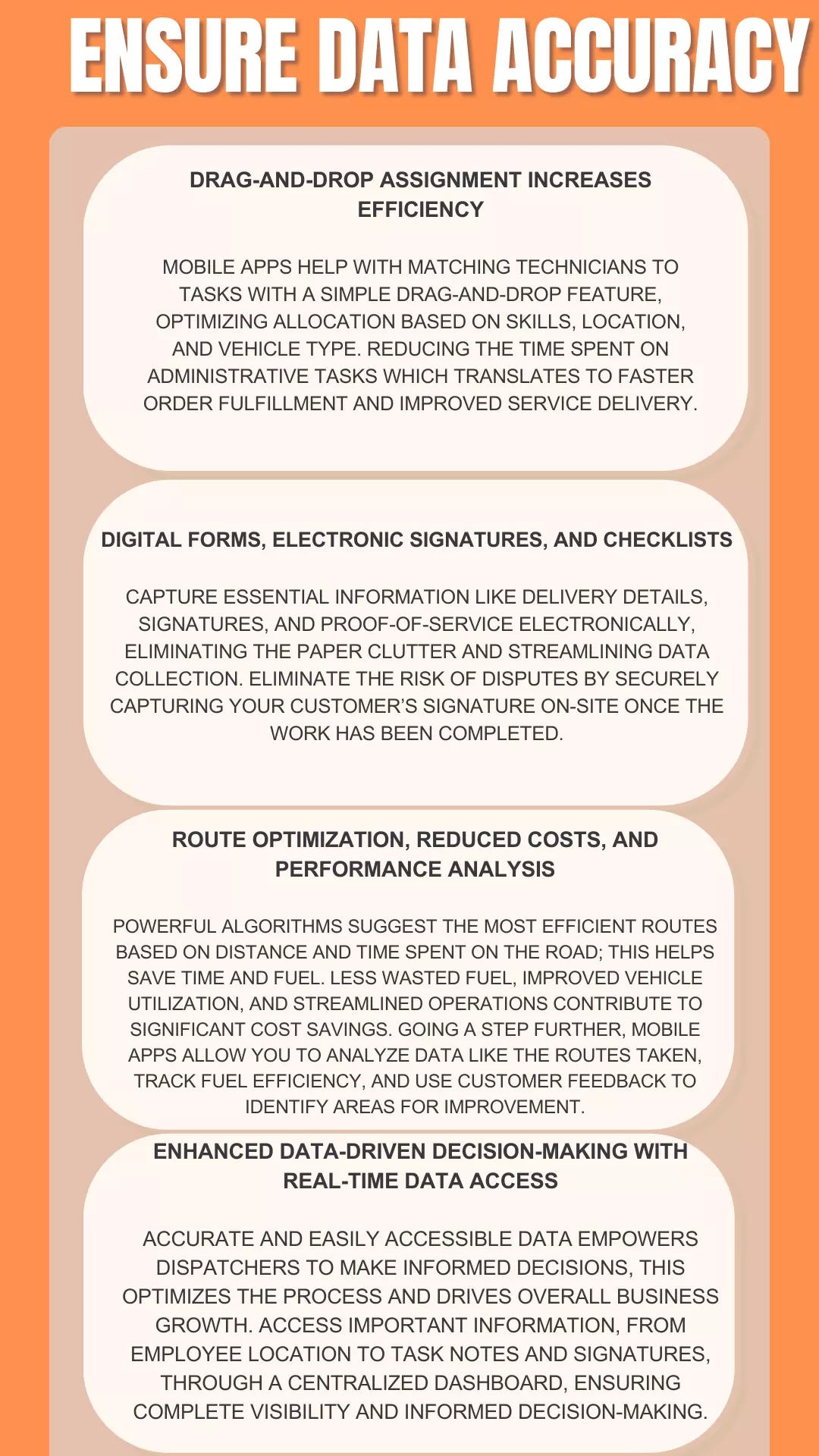
The impact of mobile apps, route optimization, and GPS
The key to the success of any business is two important factors, namely visibility and control—route optimization plays a vital role in these factors. Having a route optimization tool would immensely help dispatchers guide their technicians to the right place while also providing visibility over them. It is known that supply chain and logistics operations have always struggled with late deliveries, ineffective route planning, and idle vehicles. A study conducted by Sustainable America claimed that the typical American driver idles for over 16 minutes while on the road in a day, consuming 3.8 million gallons of gasoline, worth about $7,980,000 every day.
While avoiding traffic jams and construction zones is impossible, route optimization software plays an integral part by utilizing algorithms to identify the most efficient paths between multiple locations, aiming to cut costs and enhance efficiency. With the continuous advancement in transportation and logistics technologies, many companies are integrating sophisticated technologies to improve delivery time and fuel efficiency. This trend is very prominent as we can witness the growth in the global route optimization software market size, valued at USD $3,729 million and expected to reach $12,416 million by 2030, at a 11.56% CAGR.
Data-driven decisions
Mobile apps leverage GPS technology and real-time data, allowing customers to receive accurate ETAs, set expectations, and reduce frustration. They provide real-time tracking, allowing your customers to visualize the driver’s progress and even predict arrival times within minutes; this helps you build trust, and reduce customer anxiety and frustration. With mobile apps, your technicians are carrying a digital toolbox with them providing access to work orders, detailed customer information, equipment manuals, and troubleshooting guides, all accessible at their fingertips. An empowered technician translates to faster service completion, minimized downtime, and satisfied customers who receive prompt and efficient service. Dispatchers can analyze driver performance, identify optimal routes, and predict potential issues, making data-driven decisions that continuously improve operations and minimize costs. This constant loop of learning and optimization ensures long-term success and a competitive edge in the ever-evolving logistics landscape.
Things to consider
Choosing the right app and GPS solution requires careful evaluation of the features, scalability, and an understanding of how much support you will receive from the customer support team. Making these evaluations based on specific needs and budgets is essential to ensure maximum value. While implementing mobile apps and GPS technology is an excellent idea since it offers a compelling vision into your business, there are also some essential challenges you need to consider before taking the plunge.
The most important thing you must consider is data security. Protecting sensitive business and customer information is of utmost importance. Ensuring security measures like encryption and access controls comply with regulations like General Data Protection Regulation (GDPR). The next thing to consider would be technological integration, ensuring seamless connection with your existing systems; this is crucial to avoid data silos and disruptions. Meticulous planning and collaboration with vendors are essential to ensure a smooth transition.
Let’s talk numbers; the initial cost of the app, hardware, and data plans can be substantial. However, long-term cost savings through efficiency gains and improved first-attempt delivery rates must be factored in when choosing software with a good reputation. There is no point in adopting new technology if your crew is unaware of its capabilities. Hence, training your dispatchers and drivers to utilize the latest technology effectively is essential. While it helps to choose software that is user-friendly and easily customizable by the end user, you must factor in learning curves and resistance to change. Despite these challenges, the potential benefits of mobile apps and GPS in logistics are undeniable. By considering these factors and investing in the right resources, your business can overcome these hurdles and unlock a future of optimized operations, empowered employees, and delighted customers.
The future of evolving technology
As we conclude our exploration of how mobile apps and GPS empower dispatchers, it’s clear that technology is not just reshaping logistics; it is indeed redefining it. These tools are no longer fancy gadgets or party tricks but indispensable instruments assisting businesses with deliveries and empowering dispatchers and technicians with the data they need. The future of logistics promises even more transformative technologies, with AI-powered dispatchers anticipating issues before they arise, suggesting optimal routes in real-time, and even managing driver assignments for maximum efficiency. Self-driving vehicles and delivery drones are no longer part of a sci-fi story; they are very much functional in our present day and have the potential to revolutionize long-haul and last-mile deliveries, further amplifying the role of data-driven dispatching. These advancements might seem futuristic, but the foundation is being laid today. The dispatchers who embrace mobile apps and GPS technology are positioning themselves at the forefront of this evolution. They are acquiring the skills and data literacy that will be crucial to master navigating the complexities of tomorrow’s logistics landscape.
You don’t have to go on this journey alone; subscribe to our blog for regular insights on the latest trends and technological advancements. If you have specific questions or need a customized demo of how you can implement Zuper into your business to improve logistics, you can contact us for a consultation. Let’s navigate the exciting future of logistics and ensure that deliveries reach their destinations with a smile. Remember, we at Zuper offer you field service, your way!
